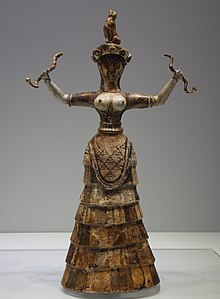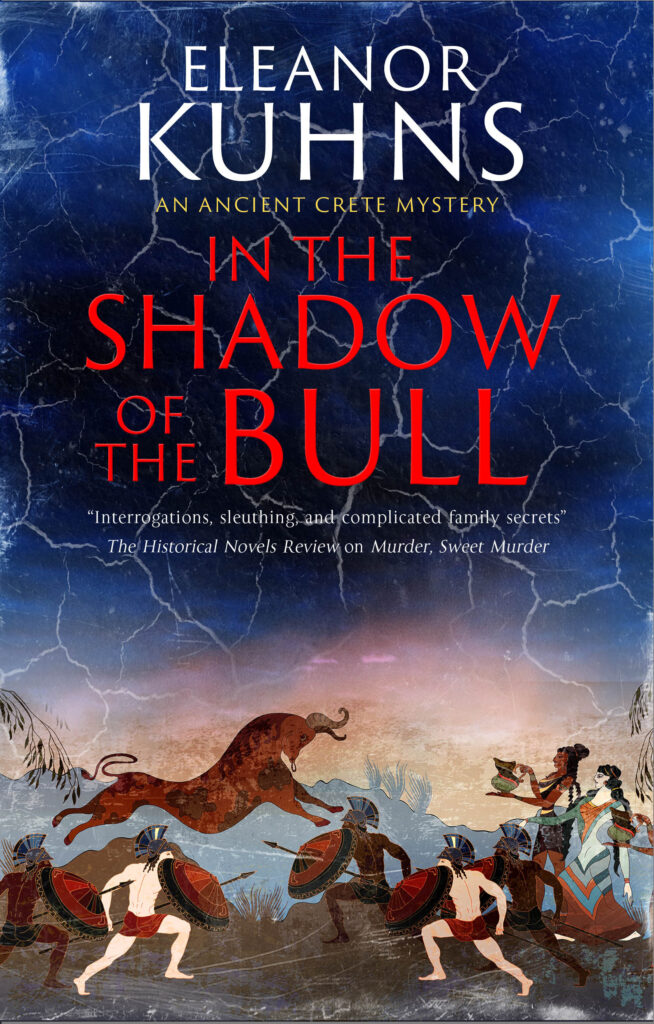From the frescos, the statuary and other artworks, we know women had a lot of power in Bronze Age Crete. Seals show a female figure as several times the size of the male figure; that is assumed to be a representation of a Supreme Goddess with a less important consort or son beside her.
Other works show figures in the traditional clothing: the short, tight short-sleeved jackets and long skirts, with elaborate headdresses. Two very famous statues show these women holding snakes (which were sacred.) These, it is theorized, are the Priestesses.

In many cultures, women were expected to know prayers/spells and make regular offering to the Gods to safeguard their homes and families. The Bronze Age was an age when many women died in childbirth (estimates rise as high as half) and miscarriages and stillbirths were common. Women employed amulets, prayers, and appeals to wise women to help them attract their love, inspire pregnancy, make the birth easy, keep the baby safe and more. These practices continued up through Roman times.
Christianity does not have priestesses. The only formal avenue for women in their worship is to become a nun. The spells, love potions, amulets and so one went underground, to women who became feared as witches.
In Ancient Crete, women would have been responsible for the prayers and sacrifices to keep their homes safe. Clearly, as shown by the above statue, there were other women whose responsibilities were far greater.
In In The Shadow of the Bull,

I imagined a class of Priestesses who lived separately and were responsible for all the rituals involving appeals to the Goddess. This was their profession. I suspect these women would have also attained a high degree of political power as well so, in my reconstruction of the world, I made the female ruler also the High Priestess with the others below her.
I will be taking a break for the next few weeks but I will return the last week of October.
